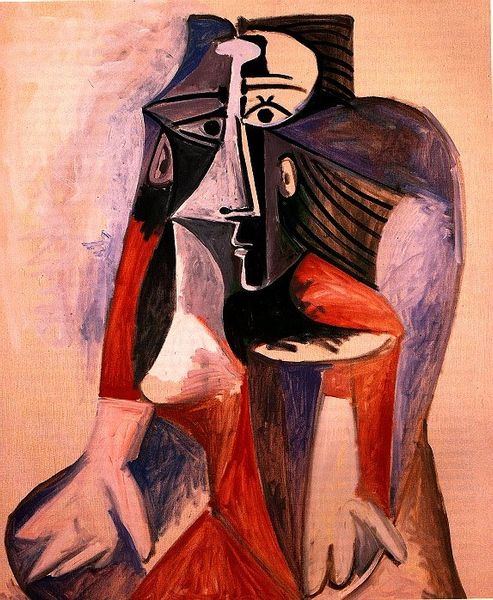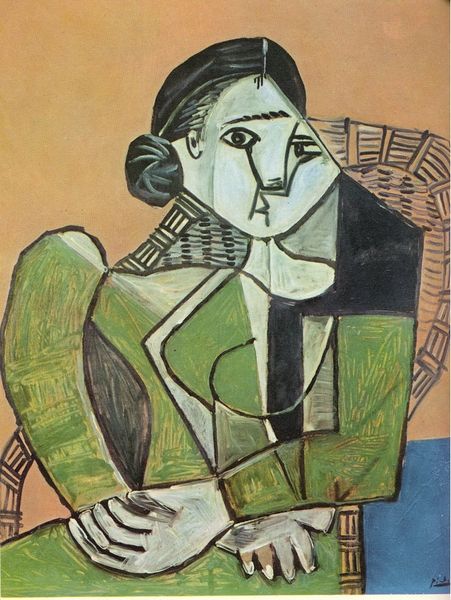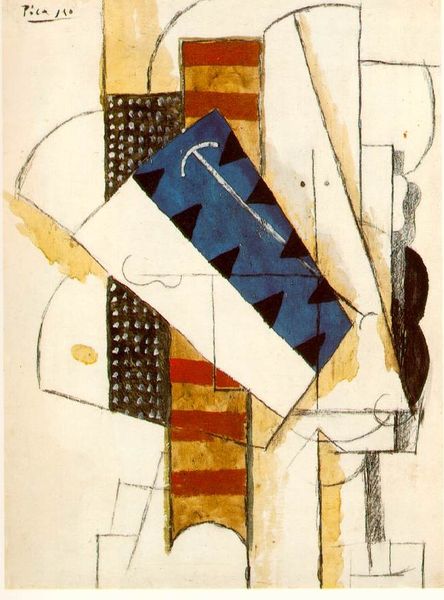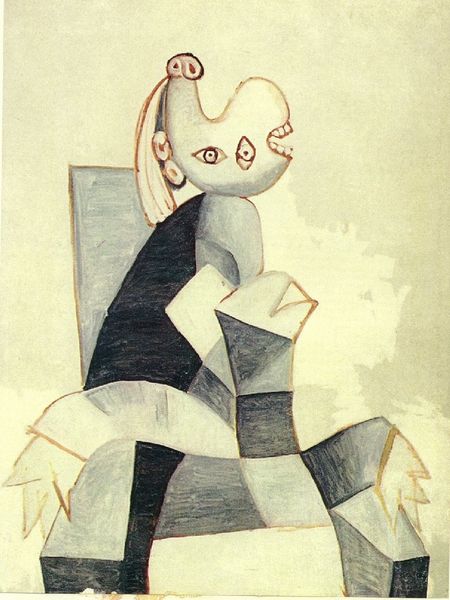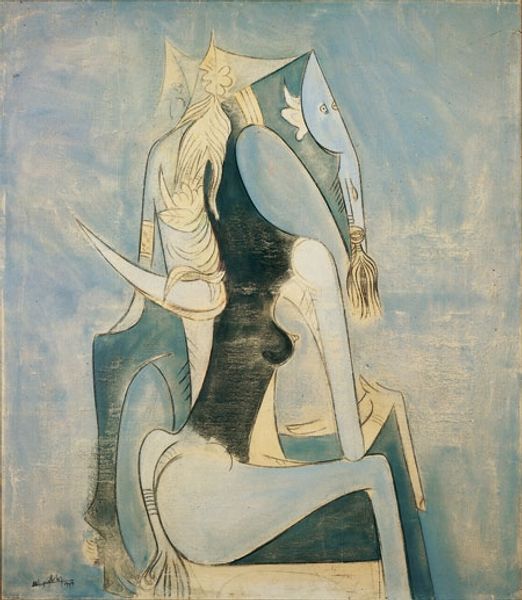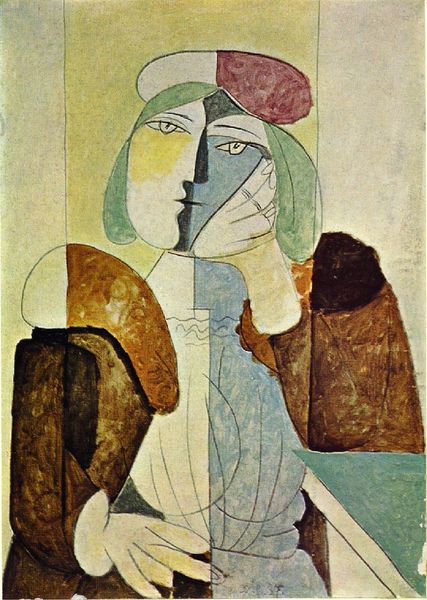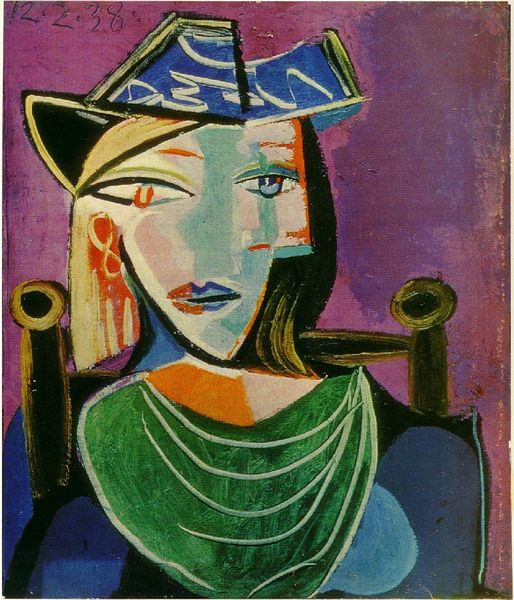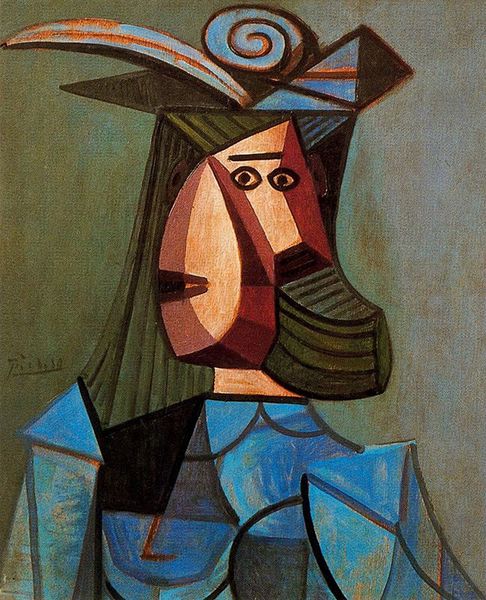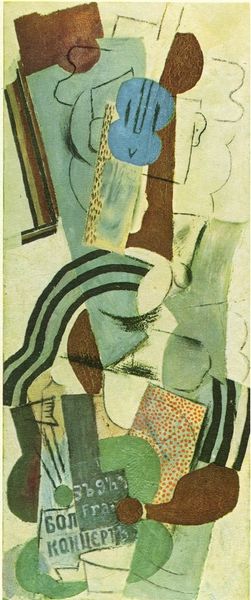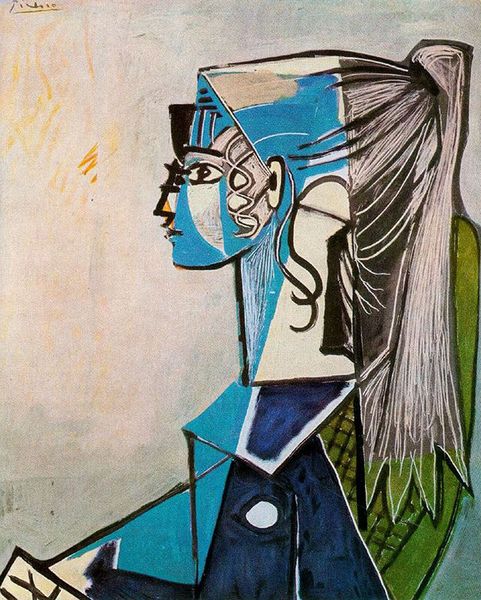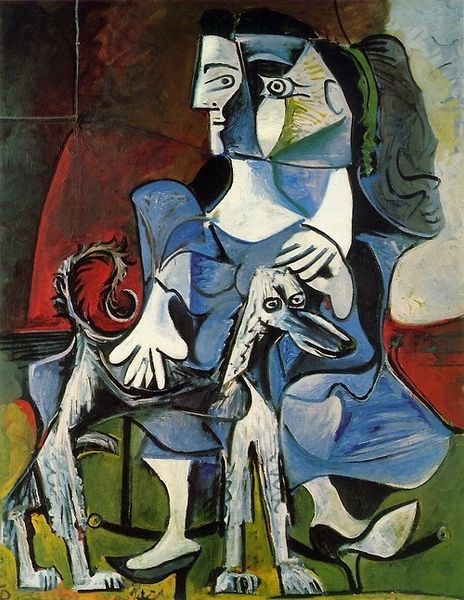
painting, oil-paint
#
portrait
#
cubism
#
painting
#
oil-paint
#
figuration
#
form
#
line
#
modernism
Dimensions: 130.7 x 97.2 cm
Copyright: Pablo Picasso,Fair Use
Editor: We're looking at Picasso's 1954 oil on canvas, "Portrait of Sylvette David," currently at the Art Institute of Chicago. I'm struck by how linear it is, the way the shapes fit together almost like a puzzle. What social or cultural factors were at play when this portrait was created? Curator: Well, in the 1950s, Picasso was already a giant in the art world. This particular portrait marks a shift in his work – a period less about dissecting reality like earlier cubism, and more about exploring variations within a more conventional, almost fashionable style. Sylvette, with her ponytail, became a muse, a commercially successful image that reflected, perhaps, a post-war desire for optimism and a renewed interest in the feminine. Think about the cultural obsession with youth and beauty being amplified during this period and how this painting of Sylvette becomes part of this. Editor: So it's less about the 'deconstruction' of the subject and more about creating a popular image, playing with fame? Curator: Precisely. Museums and galleries at that time, as now, are not neutral spaces. They elevate certain artists and styles, shaping public taste. Picasso was acutely aware of his public image and how it related to his market value. The "Sylvette" series highlights how the art market, coupled with celebrity culture, influences what we see and value as art. What do you make of the color choices in this context? Editor: The cool blues feel modern, even a bit detached, suggesting this ideal but somewhat unattainable beauty that aligns with mass media imagery. I’d not thought of this portrait as a commentary on celebrity. Curator: And that tension, between high art and mass appeal, is what makes this painting so compelling. It really speaks volumes about the changing role of the artist and the art world. Editor: That’s such a refreshing perspective! I usually focused more on the formal aspects. Curator: It is crucial to consider both the form and how artistic expressions like this engage with society at large.
Comments
No comments
Be the first to comment and join the conversation on the ultimate creative platform.
